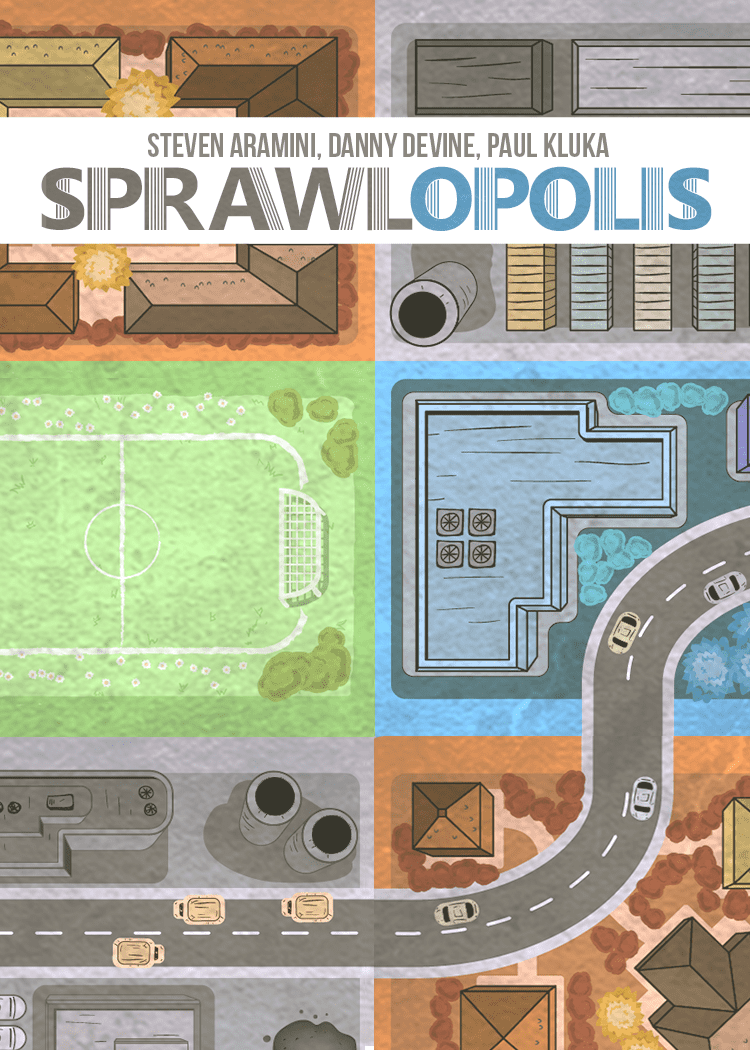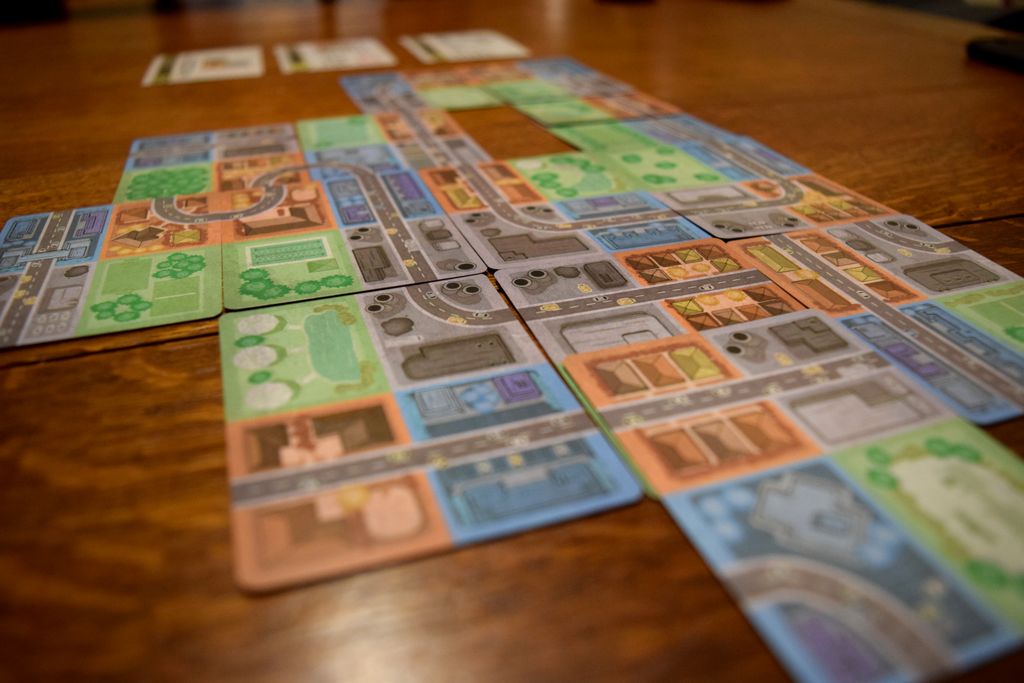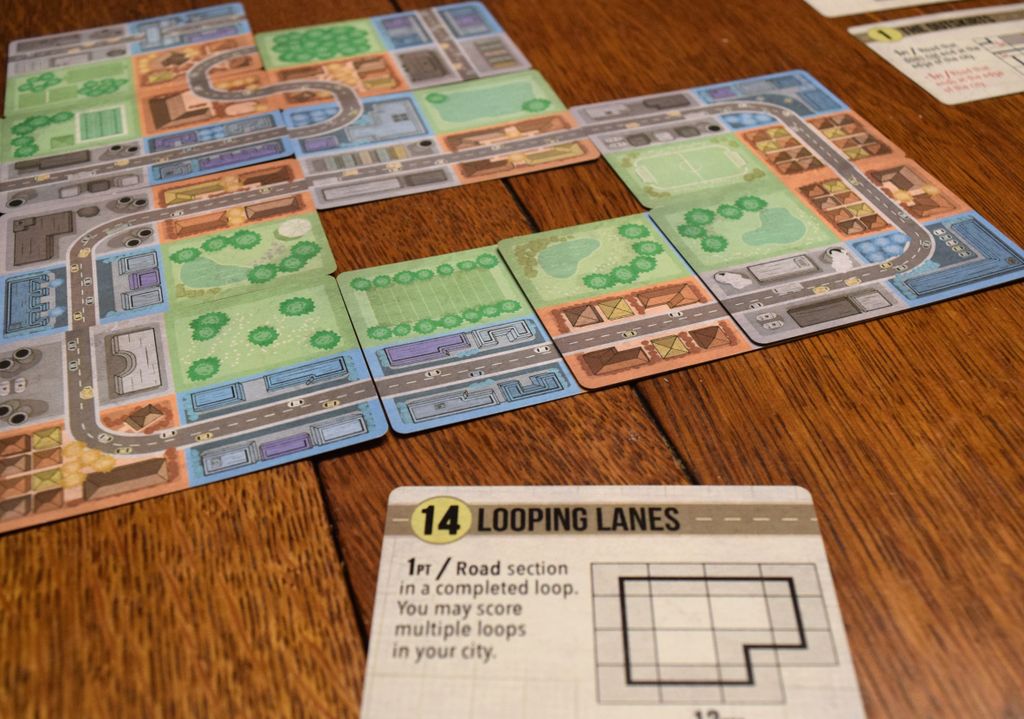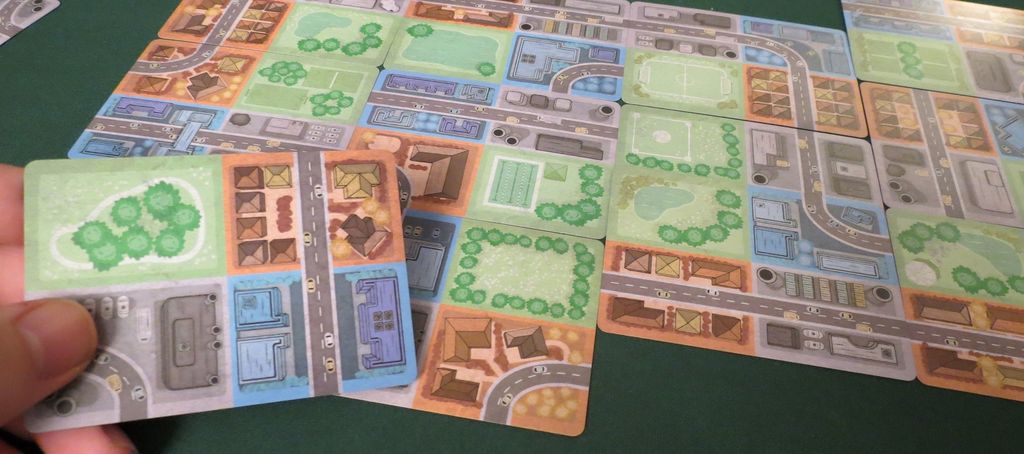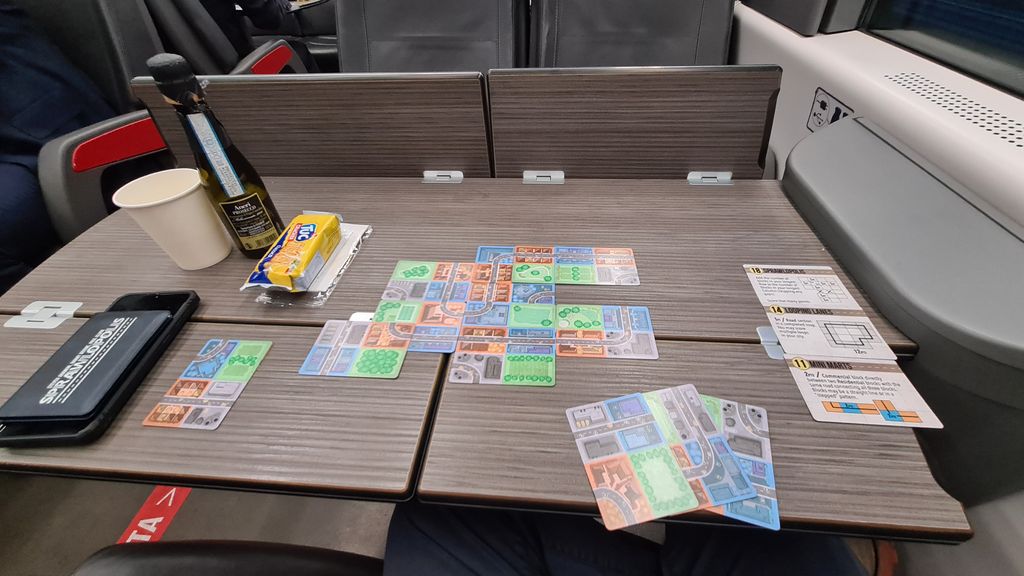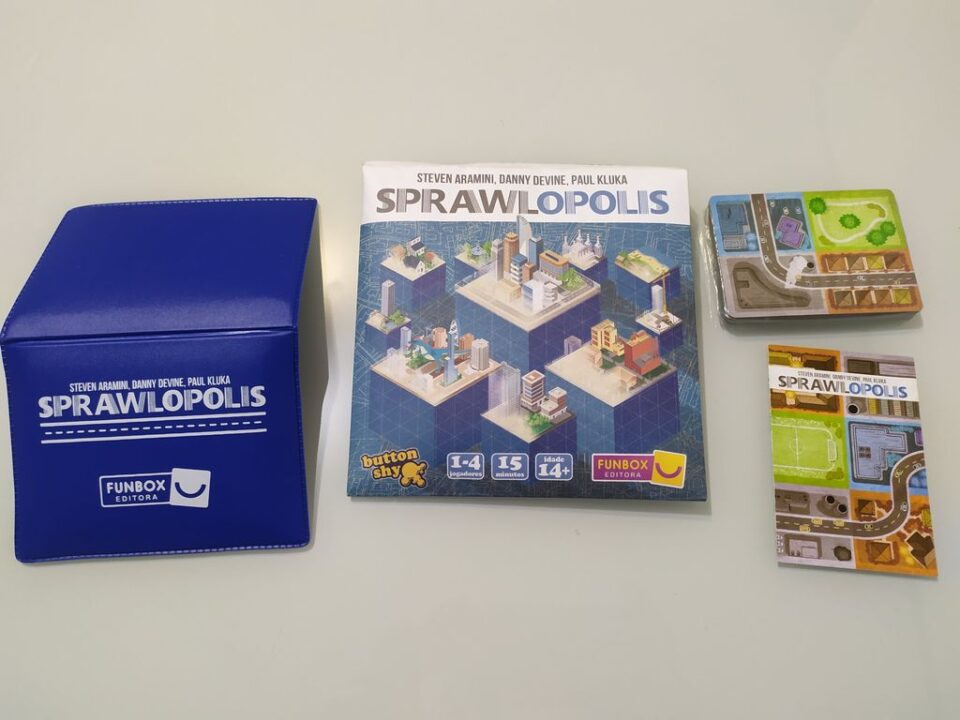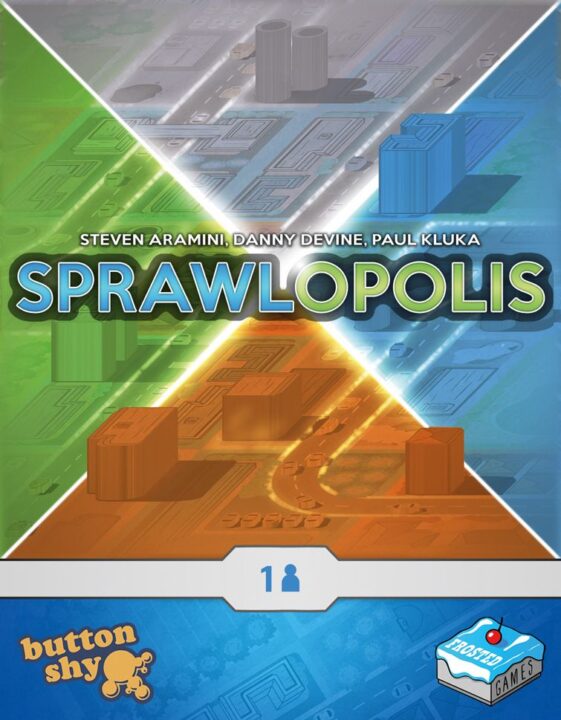Overview
Welcome to the vibrant city-building universe of Sprawlopolis. In this review, we’ll weave through the bustling streets of this compact strategy card game to uncover the brilliance behind its mechanics. From the ever-shifting scoring conditions to the deceptively deep gameplay and the pivotal role of teamwork, Sprawlopolis offers an immersive experience that tabletop enthusiasts should be eager to explore. So, let’s delve into the intricacies that make this game a standout in the genre of urban planning.
How It Plays
Setting Up
Begin by shuffling the 18 cards to form the draw pile. The back of these cards reveals the scoring conditions – select three at random. These conditions set unique goals for the game session. Then, drawn two cards to form the starting grid.
Gameplay
Players draw and place one card at a time, expanding the city. Cards must meet edges and the city gradually becomes larger. Every turn is a puzzle as players strive to meet the scoring conditions while keeping the city contiguous. Discussion and planning are key, as everyone works together strategizing the placement of each card.
Winning the Game
To win at Sprawlopolis, players must collectively score higher than the combined total on the scoring condition cards. This demands not just individual effort but a sharply coordinated team strategy. It’s a tightrope balance of pursuing high scores in designated areas while keeping the city from sprawling uncontrollably.
Want to know more? Read our extensive strategy guide for Sprawlopolis.
Scoring Dynamicity in Sprawlopolis
One thrilling aspect in my rigorous ‘Sprawlopolis Review’ dives was the scoring condition variability. Each session feels exceptionally fresh due to a shuffle of scoring cards. In one game, Maximizing Parks and Pools might rake in points, while the next might hinge on a Sprawling Residential Realm. This variance promotes adaptability and strategic thinking, leading to a myriad of ‘aha’ moments. For instance, a friend thought they were blitzing the game with an extensive commercial zone until we realized the conditions were leaning towards industrial this round. It’s comical how our faces warped – from smug satisfaction to concentrated concern in just a turn. Excitement never fades; you’re constantly revisiting strategies. And talking about revisiting, well thought-out designs transition us seamlessly into Compact Urban Planning Gameplay.
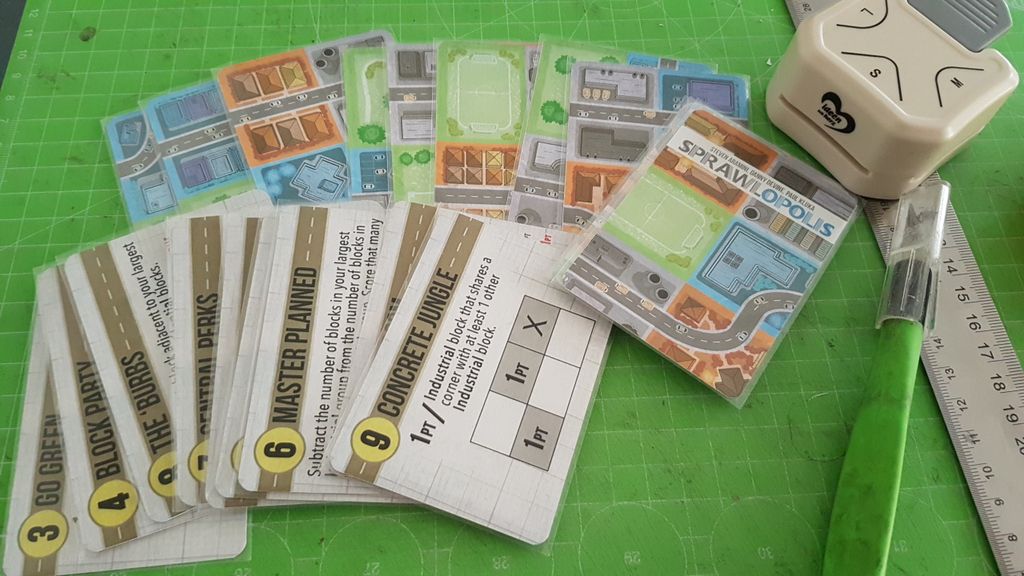
Urban Intricacies on a Tabletop
Walking through Sprawlopolis during a review session feels like a dense city tour on my tabletop. Building in a Box Start the game, and you immediately notice its core appeal; a simple deck of cards holds all the possibilities of a complex metropolis. Pocket-Sized Planning Each card flip challenges your spatial skills and decision-making. Our game nights are like group workouts for our brains, everyone flexing their strategic muscles round after round. It’s remarkable how scenarios unfold within such a confined design space.
Next up, we’ll delve into the heart of the city’s hustle: Social Cooperation Dynamics.
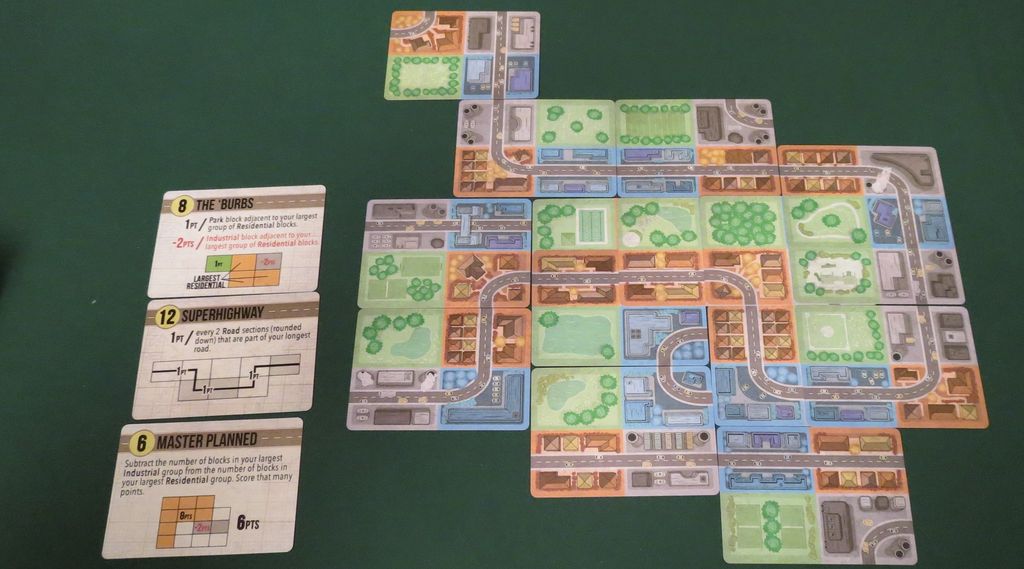
The Heart of City Building
The Sprawlopolis experience isn’t just about erecting an efficient metropolis; it’s a social affair where communication is key. In every session, the Shared Goals subheader transforms silent strategists into lively planners, discussing the optimum placement of cards. Admittedly, during my Sprawlopolis Review plays, moments of tension inevitably arose under the Committee Decisions subheader when two perfect moves clashed. Nevertheless, opting for a compromise feels rewarding, strengthening bonds and the city’s infrastructure cheekily alike. Considering dynamics like these, Sprawlopolis confidently promotes inclusion and collective problem-solving.
For its ability to blend strategy and sociability, I wholeheartedly recommend a visit to Sprawlopolis.
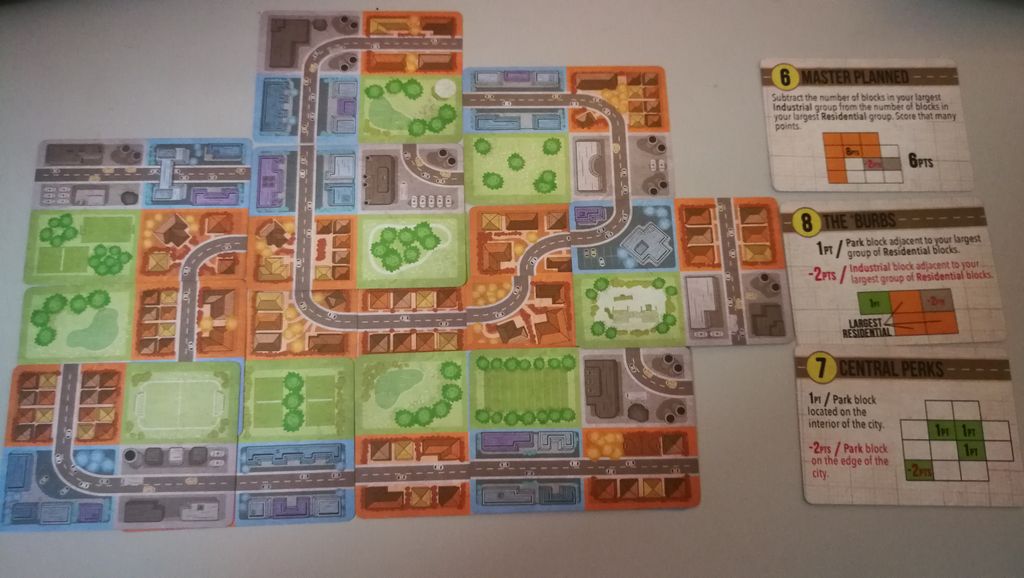
Conclusion
As we wrap up this Sprawlopolis review, it’s clear that the game encapsulates the complexities of urban city planning with a fine balance of strategy thanks to its scoring condition variability. The compact gameplay is delightfully challenging and perfect for players of all levels who enjoy tight spatial puzzles. However, what truly sets Sprawlopolis apart is its social cooperation dynamics, which support a highly interactive experience. These aspects, woven together, make it a game that I would easily recommend to anyone looking for a quick yet rich strategy card game with significant replay value and a cooperative spirit.

